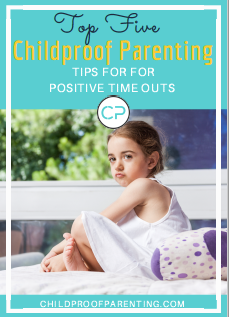The use of time outs is a hot and touchy topic! Most parents tell me they are not effective and are used in a heated moment when they don't know what else to do. It is one of the three most common parents mistakes I see made over and over and is why I want to share with you new and better ways to use time outs in your parenting. I was interviewed a while back for a piece in ParentMap Magazine on this topic and also appeared on Fox News in Seattle to answer questions about when, why and how we use time outs in our parenting. I wanted to make sure I got all of your questions answered about time outs so that you too can use this intervention more effectively and respectfully.
I want to start by asking you a few questions. What would you be thinking, feeling and deciding about your partner if you were about to leave for work and your partner says to you “I cannot believe you left your towel on the floor again! I am so angry and frustrated with you, go sit in your room and think about it until I tell you that you can come out.” Let me guess, you would probably laugh or think that your partner was a total jerk and kidding themselves to think that you would actually go quarantine yourself and “think about it”. Yeah right! What do you think your child is actually thinking about when sitting in a chair in the corner or when sent to their room?
The answer is: They are doing exactly what you would do. They would sit and steam, think angry thoughts about you and themselves, and they might even plot doing it again to show you that you cannot control them. Kids don’t like to be disrespected just as much as adults don’t. Why would it be any different for them?
Kids have the same set of emotions and awareness that we adults have. The way we treat them should model the way we would like to be treated by them. Time outs were created as an opportunity to self-soothe and calm down when emotions get high. We can use the idea of time out to work with our kids to calm down, but not by doing it in an angry, threatening, shameful or disrespectful way. The Positive Discipline approach maintains that we need to start working with kids and stop trying to do to them. The idea that we need to make kids feel worse to get them to do better is just preposterous. Kids (all humans) do better when they feel better.
So what can we do to use time outs in a way that is respectful and so that our child can learn from it?
We can use a time in or a positive time out. This approach is different because the child is given the opportunity to choose to go elsewhere or stay with you until they have calmed down. When we send kids away they often experience this as a love withdrawal. What they really need and deserve is to stay connected to you so that you can model, coach and guide them in finding better ways to express emotion or behave. Positive time outs are opportunities to teach children self-control and self-discipline. It is more respectful than sending them away, to their room, or to sit in the corner because we keep children involved in the process by allowing them to find a space that is soothing and calming to them. This kind of timeout helps to develop their innate ability to self-soothe and take breaks when emotions get strong or when things turn negative. We as parents can facilitate this process by giving our child space and time to experience and feel what they are feeling, calm down, and then process and problem solve together different ways to handle the current challenging situation or emotion.
Sounds simple? Your right, it's not! It takes a certain level of self-awareness and lots of practice to implement this type of positive time out. But what I hear from parents that integrate it into their parenting is that it works and that it feels better to both the parent and the child! And the more you practice it, the more it becomes part of your natural response.





